“The Online-Right is Dead!”
It’s a phrase repeated enough to have lost meaning.
It seems another name has been added to the great funeral pyre of discarded labels for “these spaces.” However, there is something slightly different about this particular slaughtering; it seems more than a common resistance to labeling or of a name becoming too associated with a passing trend in thought. It seems paired with a growing intention to leave the digital underground and with a sentiment that the internet itself is now dying
To what degree that belief is true and in what way it is true is a matter of debate. However, one thing is clear: the Post-Conservative-Right, as I will call it, must continue to emerge in its post-online form. Yet, how is this to be done? In what form? With what ethic? At the present moment, there is a simmering in our spheres as organizations, projects, and concerns bubble out into “real life.” Their structure and function are not uniform, and what will come to gainful fruition cannot yet be seen. Without doubt, some will fail while others succeed, and lessons will be learned.
However, it is essential that these fledgling things be given every shot at success. Lessons can be learned from failure, but trial and error takes time, and time is a resource that men will always enjoy in limited supply. More than this, it cannot be allowed to come to pass that this simmer turns into a rolling boil to no effect, lest the collapse of one bubble of venture follow the last till the very flame, that current hunger to do things, be extinguished. Perhaps it is prudent, then, to return to the great well from which so many lessons have been drawn already: looking at what the left has gotten right.
For years, there have been episodes in which a segment of “the scene” has recognized value in certain aspects of the Left. With careful study, keeping in mind our fundamentals and theirs, our own conclusions and theories have been further refined and cultivated; Postmodernism has been read from the Right and Lenin has been strip-mined for observations on power politics. Just as looking to the Left has yielded some key insights in the realm of analysis, we may find that it offers occasional insight in the realm of doing things. The left of today? Perhaps not. The Left, or Lefts, of yesteryear? Very much so. Historically, the left has demonstrated a fantastic capacity for organization with limited resources. It is prudent to study by what techniques they did this and to ask, keeping in mind the differences in goals and priors, what lessons might be drawn from them. One such study was made readily available in 1966 by a man named Douglas Hyde.
Douglas Hyde
Douglas Hyde, despite having no known relation to the Ghost of Kiev, was an interesting character in his own right. Born and raised in the South of England, Hyde grew up as a Methodist. He took an interest in politics at an early age and eventually participated in the long and storied tradition of becoming a communist as a teenager. However, unlike most modern participants, he did more than read half of the Communist Manifesto and move on after a few years with little more residue of the phase than a lingering fib that he read the whole pamphlet. After he joined the Communist Party of Great Britain in 1928, it would be two decades before he left. He was a true believer. He was a card-carrying member of the party, both in the original, literal sense and in terms of his prominence. His time in the Party took him around the world, and he met and interacted with Communists and their parties on several continents. He did everything from slinging the party paper to teaching theory, from organizing campaigns to, eventually, working on the very paper he began by hawking. When he left the party in 1948, he had become the news editor for the Daily Worker. A week later, he formally announced his conversion to Catholicism.
In the decades that followed, he became a prominent critic of communism. His work as a Catholic mirrored that of his time as a communist; he wrote in the Catholic Herald, published a few books, and traveled around the world giving lectures in favor of Christ over Marx. What we are concerned with in this article is a book he released in 1966 titled Dedication and Leadership. The book was developed off the back of a set of leadership seminar lectures he delivered to a crowd of Christian leaders at a convention for the Mission Secretariat. He described the focus of the seminar and the subsequent book as an attempt to answer the question “Why are Communists so dedicated and successful as leaders, whilst others so often are not?” Keep in mind, this is an era in which the Old Left was simply the Left; it was strong, and the Communists punched well above their weight as a minority faction in countries around the world. The book serves to focus on what allowed the Communists to be so successful, in terms of their approach, their mindset, and their techniques, so that some lessons could be taken by adversaries in general and Christians in particular.
It must be said that the situation of the Communists in the first half of the 20th century and that of our scene today are different both in terms of the traits of their movement versus ours and in terms of the world they faced and ours. It must also be said that our focus today is not anti-Communism as such. Still, one would be a fool not to review notes on effective organization in our situation. There are, however, two things that are best kept in mind while reviewing Hyde’s advice. Firstly, Hyde was attracted to “liberation theology” and was interested in Christians addressing the issues that Communists gained popularity by addressing. This is something that clearly colors his analysis. Second, like a lot of anti-Communists of the time, particularly those who were soft left, he glows. That is to say, his work was sponsored by Western intelligence agencies. This is not a message coming from a dissident perspective. The call is coming from inside the Cathedral. Still, it provides some perspective worth consideration. In this series, we will cover the highlights of Hyde’s answer to what made the communists so effective and thoughts on what lessons might be drawn from them about the challenges the Right has today, and what techniques and mindsets might be appropriately adapted.
Human Capital
“If we recognize that Communists are not some different brand of human beings from those who make up other, comparable movements, we must then turn to their methods and see what part these play in assisting the Communist Party to develop its members' potentialities for dedication and leadership.”
Dedication and Leadership - Douglas Hyde
In Hyde’s view, the key to the success of the Communists around the world was their effective use of the human capital at their disposal. On our end of the Right, we talk about Elite Theory and observe that every structure is led by an organized minority. Most of us are probably aware that the Communists, despite their egalitarian and democratic ideals, realized the need for a vanguard in the revolution. In another word, they needed an elite. However, we tend to conceptualize this solely in terms of the iconic guerrillas and intellectuals who headed up the revolutions around the world in the 20th century. What often fails to come to the forefront, and what comes across repeatedly in Dedication and Leadership, is that the actual Communists were a minority in whatever nation they fought. Where they experienced success, they did so by being a well-organized minority in society. That is to say, the elites we think of in Communist movements are the Elite in an organized minority.
This meant cultivating the whole of their membership for all it was worth. It meant instilling dedication and drawing out their potential. As Hyde points out, there is tension between perception and tendency.
“Under Communism in practice, the human personality would be suppressed… But in practice, whilst the Communist movement is still only as yet on the path to Communism and therefore must work through minorities and use each member to the uttermost, it shows a quite exceptional concern for drawing out the potentialities of every individual who comes within its discipline.”
Of course, the aim of this cultivation is made apparent with a clear-eyed understanding of politics and power, and a recognition of this cultivation always being directed to the interests of the party.
Bio-Leninism and Self-Flattery
For many men of the Right, it is difficult to imagine a hard left movement refining its members to their most competent selves today. We associate the left with Bio-Leninism, with the spiteful mutant, Oversocialization, and feelings of inferiority. Furthermore, we associate the left with the devouring mother, wallowing, and degeneracy. Indeed, an uncharitable reading of Hyde might pull out evidence for these preconceptions. Hyde was also a Christian of a very socially concerned stripe and would likely view such harsh judgments as un-Christian; I doubt that he would permit views which place so much emphasis on faults lying in a person’s nature to enter his thinking in a major way. That being said, it is not only in Hyde that one can find evidence of the Communists’ ability to build people up.
If one looks at the early history of the Chinese PLA, one will find an army critically lacking in supplies of every kind. This was an army that, as a rule, had to march, often lacking real shoes, everywhere it went for want of transportation. The soldiers often survived on rations that would make the food in a Dickens novel look decadent. They had no air support, no navy, and no consistent ability to call on anything greater than small arms. Even there, they used whatever rifles they could capture, and cartridges for those rifles were a luxury. Yet, when one looks to the early history of the PLA, one will find an army with a knack for developing illiterate peasant boys into competent officers. One will find an army that, despite wanting for practically every resource, was able to cultivate a reputation as “friends of the peasantry,” with enough discipline to, as a rule, avoid raping and pillaging. Perhaps most strikingly, it was an army that was able to inspire its men to fight, as a matter of habit, with bayonets because they simply didn’t have enough bullets.
Now, it must be acknowledged that this image is in the tradition of the PLA’s mythology of itself, and so it has been refined, like any other myth of this kind, through propaganda. However, it should not be discounted that this myth is built on pillars of fact. The conditions of the PLA were stark, and there is a great wealth of examples of seemingly unremarkable men being equipped to do remarkable things in the PLA. All of this is to say, we should take Hyde seriously when he said that the Communists made the most out of their people. We should take him seriously when he says that this was a key part of how they won where they did and how they were able to punch so far above their numerical weight where they did not. Regardless of what one thinks about the fruits of their efforts, one cannot discount the Communists' ability to organize in pursuing Revolution. One cannot deny that building up their individual members was part of this. One, however, can take notes.
There is, unfortunately, at least one feature of the Post-Conservative Right that threatens to cause issues with integrating this effectively. A flip side exists to the narrative of the leftist as the spiteful mutant, the oversocialized, etc. Put in memetic terms, if they are the Virgin, we are the Chad. This is a dynamic illustrated in jest, but it is unmistakably believed both consciously and pre-counciously in our spheres. To a large degree, this is justified. There is a reason that various models of the leftist as resentful, petty, or weak have become so popular; it probably summoned a hundred and one examples the first time you came across one of these models in clarity. Similarly, I won't deny that many of the men (and, honestly, women) I have met who cut the most impressive figure, I have met in these spaces. Even among the lopsided personalities in our spaces, you will often find a linkage between a person's weaknesses and their remarkable strengths. That said, there is a tendency to get high on our own supply.
Hang around for a while, and it becomes obvious that there are some less impressive people in the scene. Even among those of us with some truly notable virtues, arrogance is a common vice. Among those who bring less to the table, arrogance seems to be almost standard. We all recognize the mechanics by which the left becomes filled with petty, insecure, or vicious types. However, it is worth considering the extent to which a similar mechanism has been metastasizing in our own space. We have spent a great deal of time analyzing the problems in our society and the ways in which it is failing us. This has been necessary, but it also opens the door to coping. When combined with the Chad self-image, it can lead to delusional self-flattery.
One will hear great boasting about the quality of people at any event that is put on. People speak of how this is the only space where real discussions happen. There are many with a hair trigger to simply dismiss any opposition as incompetent buffoons. While pride is healthy, there are times when it slips into surreal parody; I distinctly recall getting in an argument, in a Wendy’s parking lot of all places, with someone who had construed us both as being Elites simply by virtue of having the right ideas. On other occasions, I have seen men in these spaces pushed to realize their potential, only to continuously slink back into copes we taught them. They will speak of how the Boomers didn’t pass on skills, of how the path for young men has been made twisted and discombobulated, or try to argue that pushing them toward improvement is somehow being caught up in enemy framing. Anything but confront their own failures.
These sorts of tendencies have the potential to kneecap any organizing or project we embark on. A subsection of these characters are attracted to any organization or project for the formality and perceived prestige in themselves. Some sections will buy too completely into the idea that we are “the best” and fail to understand the real difficulty of tasks or how much there is to learn, clinging like a newborn to their mantras and flattery. Perhaps worst, another section still will resist efforts to go out and do things simply because, at the end of the day, the bluster is only that; they fear, on some level, failing to live up to much, even in friendly territory.
The Inner Party, The Outer Party
It shouldn’t be surprising that a radical movement, especially one with a degree of success, would invest so heavily in its membership. At the most elementary level, organization tends to beat sheer numbers, and a greater number of organized people has an advantage over a lesser one. However, there is a great deal more to be said. When speaking of “Elites” and “Elite Theory,” there is a tendency to focus, often to the exclusion of all else, on the politician and the power broker. Two other critical ideas, selected from a sea of others, are given less attention.
The first is the classic axiom “He who says organization says hierarchy.” This point is not overlooked as a rule, but often the tendency to think in such terms breaks down as focus drifts from formal power; it is less sexy to talk about the organized minority in the school board or office than in government. The Communists of Hyde’s day understood this essential axiom. He discusses at length the Party’s concern with investing in its members, developing their competence and leadership potential, not only so that they may be of more use in the Party’s own agitations and projects, but so that their members were influential wherever they went. This is a point which will be discussed at length later, but it is worth remembering how much less socially atomized people were in this period. In the UK, unions were still extremely powerful, workplaces often elected management to a degree, and social clubs, societies, and concerns were not yet an endangered species. Every Communist Party member who was invested in and built up was a potential Elite in the context of these structures; each one was a potential node of influence outside of the strict confines of the Party apparatus.
Another point far too often forgotten is the distinction between the Governing and Nongoverning Elites. When we speak of Elites as politicians, power-brokers, etc., we are speaking of the Governing Elite. The rest constitute the Non-Governing Elite: media figures, cultural influencers, intellectuals, and so on. There are some Elites, particularly in the bureaucratic institutions, who can ride out the changes in the Governing Elite. This is exemplified in the hypothetical bureaucrat who served under the Weimar, Nazi, and East German Regimes. However, this Non-Governing Elite is still critical as they control perception, enact policy, and direct things on the ground. Therefore, for a truly radical movement, there is a need not only to have a Governing Elite in waiting, but a significant number of Non-Governing Elites as well. If change is to be implemented and not be undone, then it is not sufficient to make decrees from the golden throne to an infrastructure of enemies.
For a revolutionary movement like Communism, they have every reason to build up their members. However, it is also worth extrapolating on why it is so important to do this early. Yes, they would want to have competent, dedicated Non-Governing Elites in waiting for when the Revolution came, but it's a bit more than that. Once a movement, a party, or a group actually seizes power, there is every reason to identify oneself with the controlling identity. For this reason, for a radical movement to be most confident in the true intentions of its Elites, it is germane to form them when they have the least to gain personally; when they are not yet in control. The man who joins when you are meeting in personal homes and shabby offices believes in the ideals of the movement.
It seems that this last point also contributes to the significant dynamism of Communist movements in infancy as compared to in power. The concept of the Governing and Non-Governing Elite is often framed as the Inner and Outer Party in reference to Communism. This is, of course, down to the popularity of the cabbage-stenched dystopia penned by Orwell. One key feature in the world of 1984 is the extremely repressive existence of the Outer Party members. This stands in stark contrast to the way Hyde describes the reminiscing of ex-party members.
Indeed, if we look back to the PLA, one will find that the organization was surprisingly dynamic and autonomous in the early period, even at low levels. After seizing power, the PLA was viewed with greater degrees of suspicion and put under greater restraint. Eventually, Mao attempted to neuter the organization in favor of peasant militias. It was one thing to give the organization a great degree of autonomy when each man could be counted on to be a dedicated member. It was another after the PLA represented a (comparatively) safe and official ladder to climb, and after years of Soviet advising.
So What?
Perhaps one thinks that this is obvious. “Of course a movement needs competent people to get anywhere, and of course this will mean building them up to competence to a greater or lesser extent.” I will grant that this seems obvious when stated in plain language, and even that it has been said in various ways plenty of times before in these spaces. However, there is a difference between understanding something consciously and having it lodged behind the mind, preconsciously. When an idea has truly set in, it becomes something that one notices regularly. It sparks off things that can be tied back to it, forcing one to notice them as well. There is also a distinction, with difference, between being able to agree with a simple statement in plain language and articulate and elaborate it.
This is something I have personally failed to do on this topic in the not-so-distant past. There has been a debate about whether, as the broader scene continues to bubble up out from the depths of the internet, we take a populist or elitist approach. Of course, this is down to the particular project, and in some cases, the question will not even apply. However, on the whole, I have nominally taken the latter position. I have found that this can be taken to mean attempting to influence the Governing Elite, while the gist of what I have meant was closer to what has been elaborated above. When clarity has been achieved, it has generally established a degree of common ground.
This principle of building up the people in our projects and organizations is versatile. There is no consensus on what direction we are to move in as we venture offline. However, from this principle, there is something that is applicable regardless of what course one wishes to chart.
If you are inclined toward Populism or Reformism, or even Caesarism, then the interest should be apparent. If we have learned nothing else in the last decade, we have learned the importance of the Elites, in and outside formal government, in truly enacting anything demanded by the population. Regardless of whether one considers the man “our guy,” Trump’s first term showed the inadequacy of simply having the key to formal power. His second has shown the importance of what kind of people he is surrounded by. If another champion presents himself, we would do well to have the kind of people who can be circulated into place alongside.
If you are more persuaded of a parallelist vision, the same necessity still holds. If we are to rebuild, replace, and innovate social and communal institutions as they continue to rot away, there is a need to produce the kind of men who can actually establish and maintain such things. It will not do to be amateurs, cobbling things together when things stop collapsing slowly and come down all at once.
Even if you are a revolutionary fed-poster, the principle still holds. The Communists were the revolutionary fed-posters of their day, after all.
Investment into building up those of “our guys” who demonstrate the willingness to leave the comfortable incubator of digital space is the most bearish investment that can be made; it is difficult to imagine any potential path forward in which it does not pay dividends. Yet, despite this generally agreeable observation and the lip service which is given in this general orientation, experience tells me that it still bears repeating. When people come hungry to do things, this idea is often too abstract to be considered in concrete terms. When projects are completed, the post-game analysis does not focus enough on what skills and experience have been gained, how to refine them, and how to replicate them in others.
If Trump’s second administration has provided nothing else, it has provided breathing space for our projects in America to sort themselves out and become antifragile. A critical use of this time will be in working out how best to invest in our people.
A Culture of Dedication
“If you ask me what is the distinguishing mark of the Communist… I would say that beyond any shadow of a doubt it is their idealism, their zeal, dedication, devotion to their cause and willingness to sacrifice.”
Hyde attributes much of the successes and impact of Communism to a culture of dedication amongst its members. This dedication was manifested not only in their willingness to take action in the most mechanical sense, but in their amenity to the demands of the party program in terms of discipline, direction, and education. There are few direct parallels between the Party’s leveraging of this dedication and what our various projects might make of such an asset today. We do not have the totalized world view or the political platform. Our projects are largely social or technical, and we do not have the same common sense of utopian vision.
However, some things are held in common. Firstly, there is no simple mathematical formula to build people up, and certainly none that does not have the buy-in of the man being invested in. One can lead a horse to water and all that. Moreover, if you have ever worked on a project or in any organization that did not produce an immediate profit, you know dedication and enthusiasm are critical to the slightest success. In Hyde's view, two of the key aspects that allowed the development of this consciously nurtured culture were appeals to idealism and making big asks. Both of these things hinged upon demonstration of dedication.
Idealism and Youth
“Youth is a period of idealism. The Communists attract young people by appealing directly to that idealism. Too often, others have failed either to appeal to it or to use it and they are the losers as a consequence.”
Anyone who had a lefty phase as a teenager can, without any conscious processing, understand why devotion would be such a striking feature of a truly Communist Movement. Idealism is the key. The left is, in many ways, built on trying to realize misguided or misinterpreted ideals that have already been primed within a culture. It is no new observation when Hyde states, “we must in humility accept that amongst the Christians, and Catholics in particular, who go to the Communists are many who find in Communism what they had hoped, without success, to find among the Christians.” Carl Benjamin and others have also pointed out that the hard left can be read as an attempt to hold the Enlightenment to its unrealized promises. Young people are, of course, the most prone to idealism. Hyde points out that the average recruit to the party was 17 to 25 years old. Thus, a strength the communists enjoyed was a continuous revitalization by young, dynamic recruits.
It is fair to ask whether this ability to sow and reap idealism can truly be attained by the “Right” as effectively as by the “Left.” The average Rightist is, even when not a Conservative, prone to a conservative temperament. We face a period in which our society is discontented with what exists and where the image of the past has been largely formed with the Left on the dialectical front foot. We certainly cannot sell the principles of idealism that the Left does. However, the Right has a long history of romantic ideals itself; even the RETVRN meme follows in this tradition. We can hardly expect to achieve anything without some level of idealism and myth; idealism has led a lot of fools off cliffs, but pessimism has never gotten anyone anywhere.
We surely have the confidence that our ideals are deeper, more natural, and more, in some sense, human than those of the Left. But there is, of course, still a conflict of visions on the Right. There has been a discussion of whether we need, or can even achieve, a positive vision in our current loose coalitions. The occasional drama between the Christians on the one hand and the Pagans and Atheists on the other has become a familiar episode plot in the drama of our X feeds. Whether this fault line can be kept from becoming a rift is a discussion for somewhere else, but in the Communists, as with so many other movements, we see the value in the positive vision and an ideal that motivates people. It brings forth the dynamism and action that the Right naturally recognizes as virtues. It gives animation to organization.
The strength of a positive, inspiring vision is germane to the more concrete concerns of the scene as well. Inspiring visions are just that: inspiring. But the young are the most responsive to such things. This scene is overwhelmingly young, particularly by the standards of anything semi-organized on the Right. We also happily observe that Zoomer men trended toward Trump in 2024 and have trended toward “right-wing” parties in a great many recent European elections. However, there is reason to resist resting comfortably, assuming that young men can be counted upon.
I am young, but not as young as when I first wandered into the pipeline that led me here. The first time I got involved in an organized group/project that grew out of some part of the right-wing internet (or perhaps, at that time, more so the counter-left), I was 17, and somehow I was not the youngest guy around. Moreover, when I was in high school, there was a semblance of common awareness of, at least, the anti-SJW scene. I recall clearly a history teacher asking me (a known political autist) if I knew who Black Pigeon Speaks was because a girl in the previous period had brought him up favorably. On another occasion, a girl I was dating casually asked me my thoughts on wig-nats. I doubt my school was particularly remarkable in this regard.
Now, I am in my mid-twenties. Most of the men involved in the various projects and organizations I take part in are between my age to around a decade older. I can think of only one man in my local scene who is noticeably younger. In my other circles, I am only aware of one other notably younger than myself who could be described as adjacent to our spheres; he at least watches Lotus Eaters. At conferences, I do see younger faces, but they are fleeting compared to those older than myself. What has only struck me more recently is that the general age range I encounter seems to roughly age with myself. There is a real question as to whether there is a void beginning to form in this sphere below the older Zoomers.
It must be said, changes in my own habits as I get older have obviously limited my encountering younger Zoomers in this general space. I still follow posters, streamers, and writers online, but I don’t “hang around” online like I once did. Spending time at in-person meets and forming local connections is going to select against anyone considerably younger than me. Teenagers are not as autonomous and, frankly, are going to be less confident about revealing themselves to internet schizos in person.
It is ultimately impossible for me to get a temperature check on what the kids are talking about in the cafeteria in 2025; for all I know, they’re sitting around deconstructing the post-war consensus. However, it should also be recognized that when I was first introduced to online political discourse, the Right truly owned YouTube, and that’s where guys my age went online. In fact, the whole internet culture of that period is sometimes remembered as the “edgy era” in mainstream circles. Today, we are still on YouTube, as well as Substack and X, but I do not get the impression that these hold the center of younger Zoomer attention the way they did for younger Millennials or older Zoomers. I have gotten a few glimpses that have given the impression that there is a whole sphere of political debates and general culture-warring happening on TikTok, for instance, which I, and my various friends in the scene, know essentially nothing about, and which knows nothing about us.
There is some reason to believe that the male youth still tracks loosely Right, but it’s unclear what direction they are piping toward. Indeed, if anything strikes me about my generation, it is more so discontent and political schizophrenia on both the group and individual level. This may seem like a trivial concern, but it is life or death to the most essential and concrete goals of some of our projects as we attempt to build lasting institutions. Even beyond simple vitality, youth provides continuity. We often aim to repair and rebuild things that our culture has lost; take the often-mourned failure of the Boomers to pass on so many standards and skills. One of the touted goals in our space is to reestablish patronage and mentorship. This is more important than can be expressed, and I see this happening in my own experiences in the organizations and projects our space has already launched; this is actionable and key to the sort of building up of our people discussed before. However, if we continue to refine and build up structures for this, it is of little use if I am the last generation to benefit from it. It is romantic to talk of our sons growing up together and benefiting from the organizations and order which we have helped to create, but it is critical to have generations between. Children learn to crawl sooner, walk faster, and speak earlier if they have older siblings near them in age; something of this principle holds true later in life. I have heard old men speak of how, when they were young, they got advice from their old-timers about life that simply never hit home until seniority was on the horizon. Moreover, I remember how much more helpful the advice from men slightly older than myself was when I was first becoming an adult, and the same is true now. Yes, the wise elder is always valuable, but there is something to be said for the man who remembers being where you are now with greater clarity. There is more to be said for it in a society that continues to change as fast as ours does.
Beyond the issue of mentorship, there is also the concern of building a stable canon of wisdom on which our very ability to be culturally, socially, and politically effective is based. We have come to understand that the Civics 101 and History 101 narratives are deeply inadequate. We have learned and, in some cases, developed and refined models that are more accurate; these things must be passed on. The break in the Old and New Left proved to be disastrous for the ability of the Left to operate effective organizations, in part because of a lapse in institutional memory. A few years ago, I recall the New Right Papers making the rounds in our scene, and many commenting that they had already come to many of the same realizations that we now have. What we do not want is, 40 years from now, people reading or watching what we are creating today and realizing that we had come to the same conclusions they have had to work to yet again. We want these things to continue to be refined and passed along.
This is not to say that we need Dave Greene or whoever else to start putting their time into making TikTok shorts. What can be said is that, despite the current energy of the right in America from the MAGA boomer to the Zoomer men, our scene is still a small minority that must be dedicated to our projects. Inspiring people with romantic ideals is a key part of this culture of dedication. Romantic ideals appeal to the young, and the young are a great well of energy and potential dedication. They are needed to make anything we embark on outlast ourselves. We must keep an eye towards discerning whether we are continuing to speak to the hearts of the young.
Making Big Asks
“They never make the small demand if they can make the big one... Dedication and willingness to sacrifice must be developed within a person, then drawn out of them, not forced in.”
Repeatedly, Hyde identifies that another key in the Communists' ability to foster a dedicated culture was their confidence in making unabashed, big asks of people. Members were giving up potential salary, comfort, lifestyle opportunities, and the lion’s share of their time. They risked imprisonment or, in some cases, their lives. They did not hide these sacrifices from potential recruits or from new members; indeed, they made a habit of asking significant struggles of new members. By not hiding the sacrifices, they impressed potential recruits and set a tone for what to expect. By asking for a lot of new members, they achieved buy-in and tended to get what they asked of people. More than this, the culture this fostered was actively enjoyed; it gave people purpose.
Once again, we cannot directly emulate the Communists, nor should we. The Communists in Hyde’s time had built up what amounted to a parallel society. He goes so far as to state, “By the time I left [the Party], almost every friend I had in the world was a Communist.” With this came a sort of cultish safety net we do not have or even want in precisely the same way. Still, there is something to learn from the method and the attitude.
When members from our scene socialize physically, the camaraderie and socialization that naturally arise benefit each member. This is no small thing. However, it seems you can only have men together so long before they look for a project. The local Oregon scene was embarking on projects before any formal organization. This brought people closer together, and it brought skillsets and strengths into sharp relief. More than this, it built a core group who were dedicated, in some sense, to the scene and to the others who had realized these projects with them. It created a sense of momentum and a deep satisfaction in having accomplished real work.
When new faces make the jump into showing up IRL, there is some section of them that come asking how they can contribute. This is particularly apparent after something has just been completed publicly. The impression that people are working hard to achieve things makes others want to be a part of it. There are also those who come to join a formal organization and express doubts about how much they can contribute. My knee-jerk reaction has been to explain how little can be done that is still helpful. However, I have come to wonder, reflecting on Hyde’s words and my own experiences, if it would not be better to ask a little more of them; perhaps to try and ask enough that it requires a little bit of sacrifice. There is, in their expression of concern about how much they can do, an implication that they see the organization as something that people are dedicated to and that demands contribution. Yet, they are still interested in supporting it. If you ask the minimum, you rob them of the satisfaction of having contributed meaningfully on the scale that they can, and the organization of the input it could undoubtedly use. Furthermore, you might jeopardize the sense of earnest seriousness that gives these projects and organizations their appeal.
Dedication Fosters Dedication
“The strongest impact made upon the mind of the recruit by the first Communist with whom he associates is likely to be of dedication. The first impression made by the Party comes from its activity-and the apparent relevance of that activity to our times. This being so, the man who decides to become a Communist does so in the expectation that he, too, will have to be dedicated and active as well.”
In Hyde’s view, both the ability to stoke idealism, attracting youth, and the ability to effectively make big asks of new adherents require the demonstration of dedication by the Party membership. That is to say, dedication demonstrated fosters further dedication, leading to a self-perpetuating culture.
It is easy to understand the function by which showing, in undeniable terms, the belief of members in an ideal or cause can cut through cynicism. As much as the young are idealistic, they can also be suspicious. When people, regardless of relative youth, perceive an organization or movement to be full of dedicated people who take action, they expect to join with a willingness to follow in the same mold. It acts as a filtering mechanism; those who are attracted to the action and dedication are, more often than not, those whom a movement wishes to attract.
Measured Optimism
I tend to be frustrated by, more than anything else, the smell of copium. I have already illustrated that there are grave concerns in the future of the Post-Conservative Right. There is a tendency for self-flattery, a potentially emerging generational void, and a fractiousness that makes the formation of a coherent vision difficult. All of these issues, and more besides, are not to be ignored.
Yet, there is no need to be blackpilled; there is every reason to be optimistic. In the endless cycle of “we’re so back… it’s so over,” we seem, at the time of writing, to be in an “it’s so over” moment; The disappointments of the Trump Presidency in recent weeks have been discouraging. However, the breadth and depth of issues in modernity should make it clear that this was never about one administration. I have only been truly socially and politically conscious for a decade or so, and in that time, the landscape has changed beyond recognition multiple times over. If one finds no other reason to be optimistic, one can be confident that the times are changing.
I may, for instance, be critical of the self-assuredness with which the Right has come to claim victory over the minds of young men. However, what I have experienced personally is a great openness in the average youth to things unthinkable a decade ago. There is fertile soil here; we only need to be conscious of reaping it.
There may be every reason to be concerned about the ability of our general spheres to form a singular positive vision, but there is reason to be hopeful as well. The Right has made war amongst itself, allied, and fractured again for as long as I have been plugged in to the movement of things. Yet, I would argue that it has tended toward refinement, not degradation, in that time. Looking beyond ourselves, what challenger is there? The Left is only beginning to regain its footing after 2024, and it does not seem that they have managed to untie their shoelaces. The center obviously cannot hold. Even the decline of Trump’s golden boy status is an opportunity; one cannot deny the double-edged nature of such a flawed champion. There is a total vacuum of coherent narrative.
Even the malignant self-flattery is an issue for which there is every hope of an antidote; the very movement into the real world is antithetical to it. This self-flattery is narcissistic in character, and the internet is a machine for the manufacture of autism and narcissism. As the drive toward the IRL plays out and organizations and projects continue to be attempted, this malignance can be washed away.
Fostering a culture of dedication and developing their membership are the keystones, in Hyde’s view, of what made the Communists so effective. When we return to Dedication and Leadership, we’ll look at Hyde’s account of how the party approached the relationship between theory, education, and action, and how this played into building its members into effective leaders.


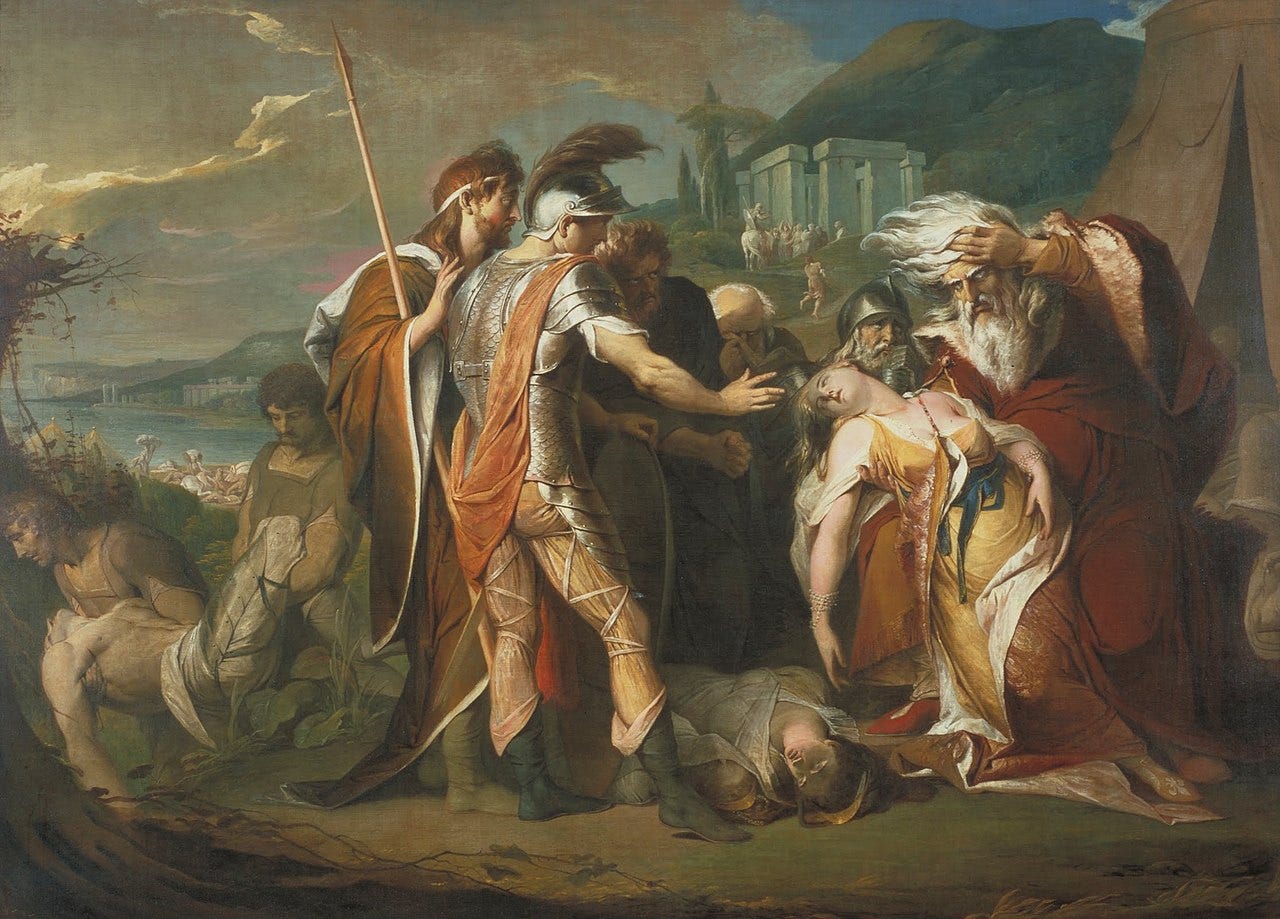



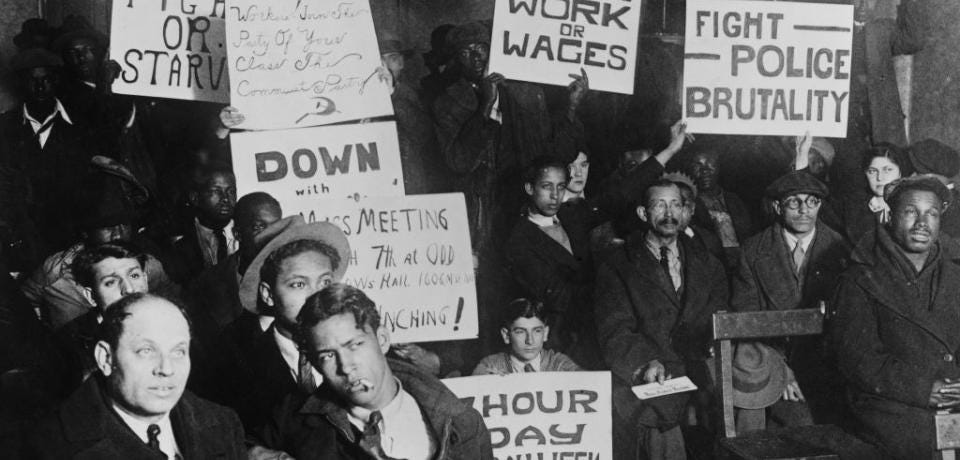



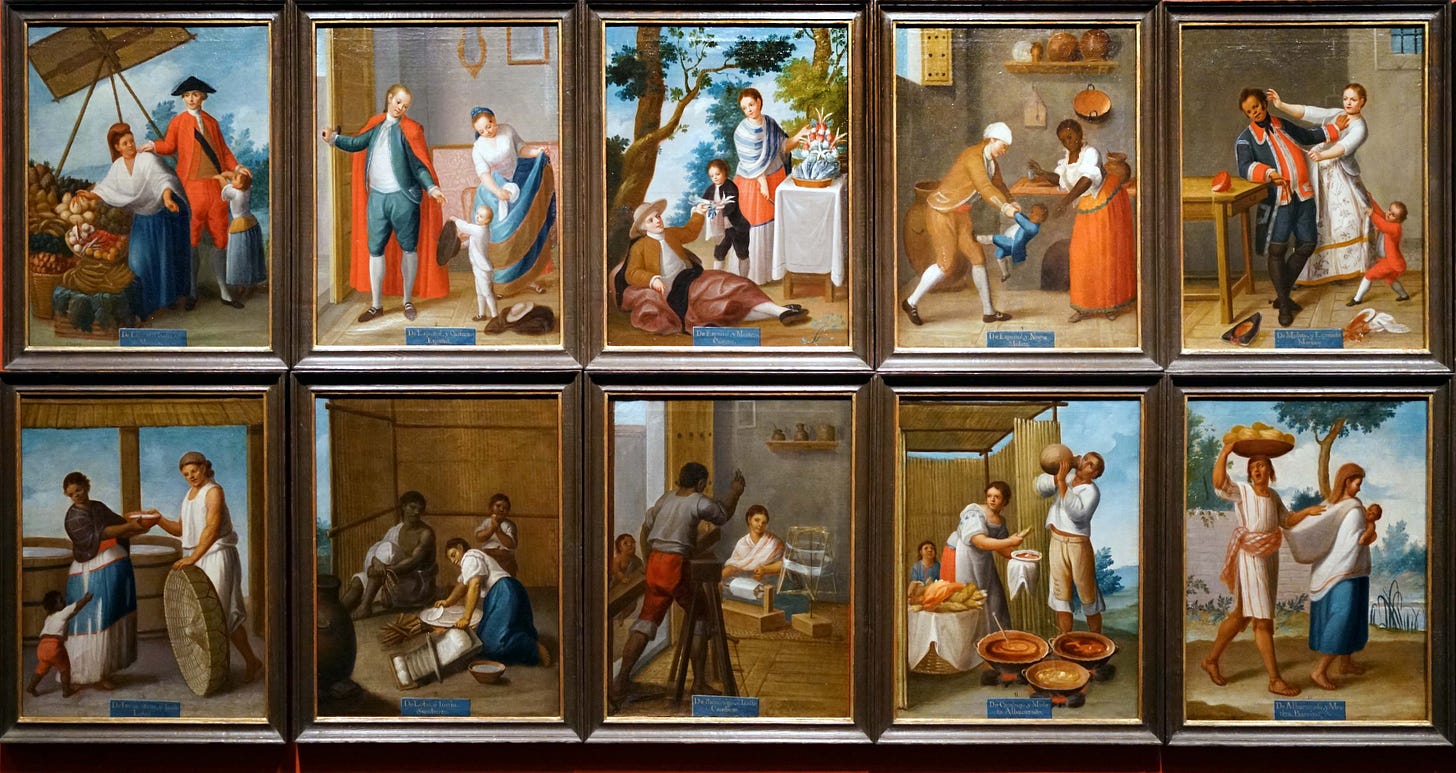
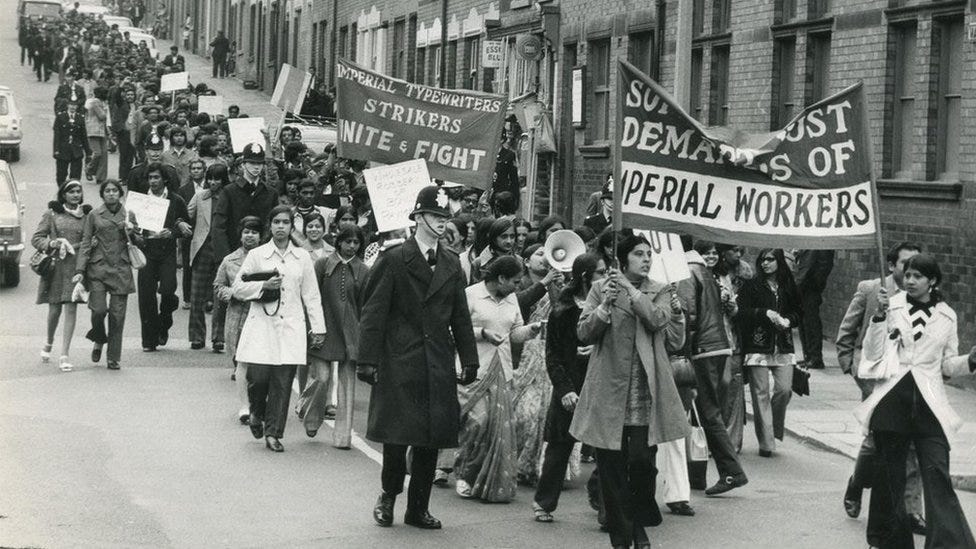

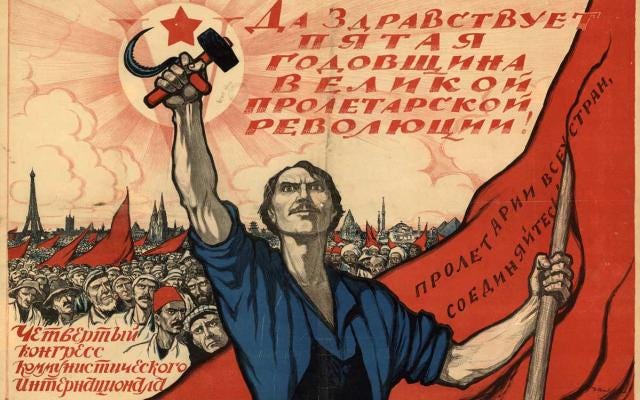


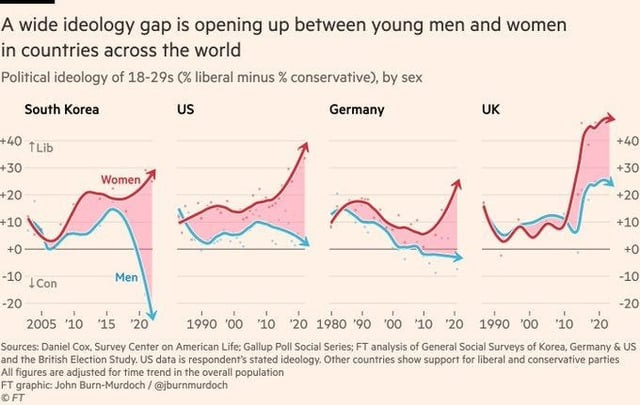



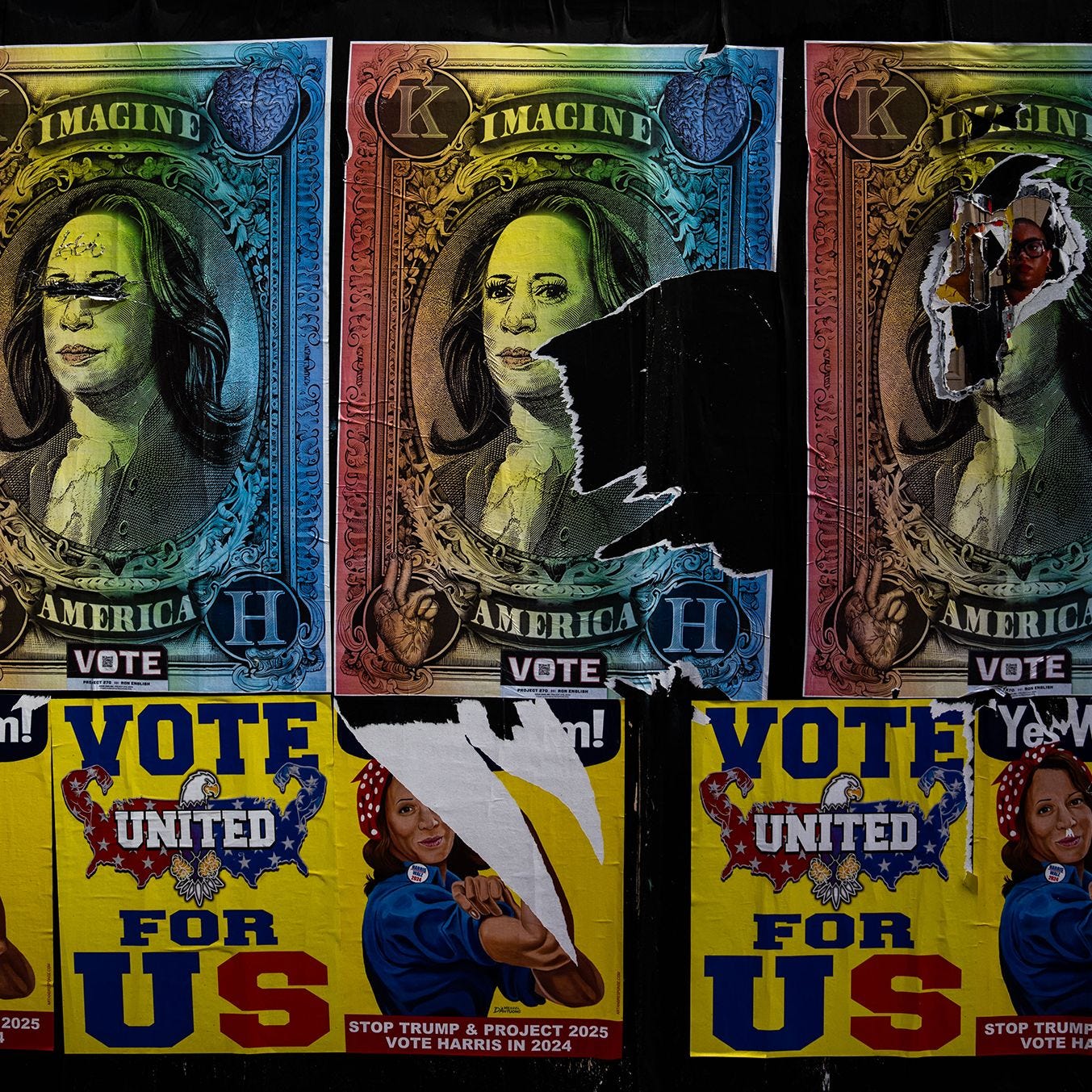

First Time reader. Added to my book list. Many thanks. Early 30s btw
I’m going to add this to my book list